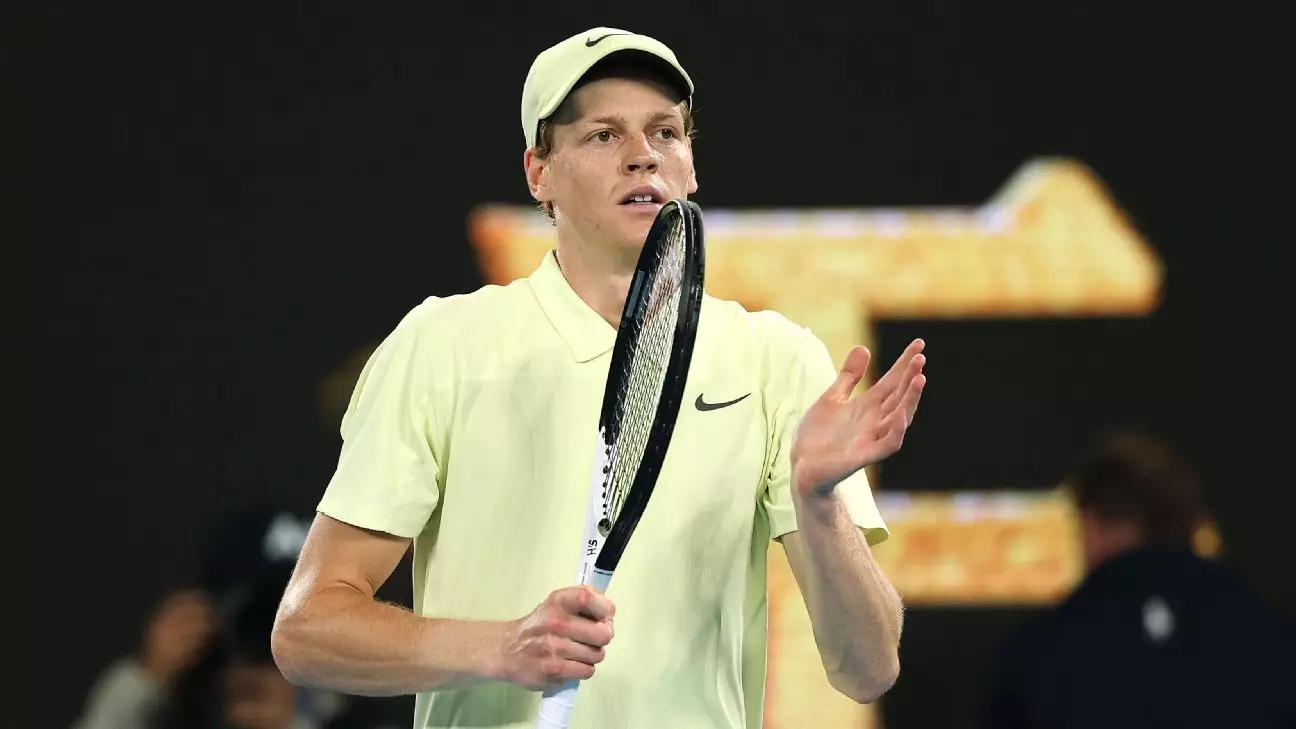Jannik Sinner, the rising star in men’s tennis, has recently found himself at the center of a controversial doping suspension that will keep him off the courts for three months. The repercussions of this ban have already started manifesting, most notably through his withdrawal from the upcoming MGM Rewards Slam exhibition event in Las Vegas on March 2. With Sinner sidelined, Casper Ruud has been announced as his replacement, joining the likes of Alexander Zverev, Taylor Fritz, and Tommy Paul. This sudden change, announced via a press release, encapsulates the profound effects of Sinner’s predicament on both his career and the tennis community at large.
Sinner’s three-month suspension was the result of two positive doping tests due to trace amounts of clostebol, an anabolic steroid. Sinner claimed that the substance entered his system through a contaminated cream, reportedly purchased by a former member of his team. This incident prompted the World Anti-Doping Agency (WADA) to appeal a previous exoneration by the International Tennis Integrity Agency, leading to a penalty that raised eyebrows across the tennis circuit. Sinner’s case underscores the precarious nature of professional sports where even inadvertent lapses can lead to severe consequences.
While Sinner’s absence from the Las Vegas exhibition may be a setback, it is noteworthy that he will not miss any Grand Slam tournaments due to the timing of his suspension. The first significant event affected will be the prestigious Rome Masters, which runs from early May, and serves as a crucial preparation ground for the French Open starting on May 25. This situation poses questions about the effectiveness of the recovery and rehabilitation framework within professional tennis since players like Sinner, who can bounce back immediately after a suspension, may still present a high competitive advantage when they return.
The players affected by Sinner’s absence, including Ruud, Zverev, Fritz, and Paul, have their careers intertwined with Sinner in various ways, particularly through their past encounters on the court. Each of these players has faced their own challenges at major tournaments, but Sinner’s ascent has shifted the competitive landscape. His recent successes include winning three out of the last five Grand Slam titles, asserting his status as an emerging force in men’s tennis. There’s a palpable tension surrounding this incident, as many fans and players reserve judgment on both Sinner’s conduct and the broader implications of doping regulations in the sport.
As Sinner navigates the fallout from this doping controversy, the larger question remains about the message being sent to young athletes, integrity in sports, and the complexities of performance-enhancing regulations. Sinner’s suspension, though unfortunate, might serve as a stimulus for discussions on transparency and accountability in sports. The tennis community will certainly be watching to see how he rebounds from this situation, both in terms of his competitive performance when he returns and in his role as a representative of the sport’s values. The upcoming exhibition also promises to be an exciting event, albeit with a notable absence in the form of Sinner, whose potential return will undoubtedly be a focal point in the months to come.


Leave a Reply